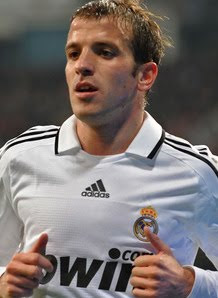
What is a football club? In countries that operate a franchise system, the answer is relatively simple: it is the legal right to be a member of a league. It's the same in baseball where the Dodgers remain the Dodgers wherever they happen to play, even if it doesn't quite feel like it to fans in Brooklyn, who saw their team uprooted to Los Angeles in 1958.
Where the league structure is organic, the situation is rather more complex, as the case of Wimbledon has proved. Everything about AFC Wimbledon suggests that they are a continuation of the old Wimbledon – they have a similar name, they wear a similar kit, the programme for their game against Luton last week included a feature on the 1988 FA Cup semi-final between Wimbledon and Luton, while various historical artefacts and trademarks associated with Wimbledon were ceded by MK Dons in 2006 – and yet it is MK Dons who remain the league club.
History, geography and the feelings of supporters – at least in the case of AFC Wimbledon, and they appear to have popular sympathy among British fans – combine to form a nebulous entity that is somehow that club's soul and it is that, rather than any legal stricture, that seems to define a club's identity. But if the case of Wimbledon seems complicated, consider that of FC Timisoara who, after overcoming the Uefa Cup winners Shakhtar Donetsk, face Stuttgart in a Champions League play-off tonight.
Timisoara is a proud university city in the west of Romania. In 1921, students there established a football club, Politehnica 1921 Stiinta Timisoara – or Poli, as they were more popularly known. They were never giants, but they did reach six Romanian Cup finals, winning the competition in 1958 and 1980.
Then, in 2000, their owner, the Italian entrepreneur Claudio Zambon, decided to relocate the club to a suburb of Bucharest, seemingly reasoning he would attract larger crowds in the capital. He was wrong, and Politehnica Timisoara now play in the 600-capacity Comprest GIM Stadium in the Bucharest Municipal League, in the fourth tier of the Romanian pyramid.
That left a vacancy in Timisoara, which was filled two years later when the top-flight AEK Bucharest moved west. AEK themselves had not long before been the southern Romanian team Fulgerul Bragadiru. In a similar quest for fans, they had been moved to the capital by their owner Anton Dobos, who then changed the name of the club to ensure nobody forgot that he had once been a good enough player to turn out for AEK Athens.
In Timisoara, he changed the name of the club again, to Politehnica AEK Timisoara, and altered the badge and the kit to reflect the original Poli's violet and white colours. Effectively there were two Politehnica Timisoaras: the "real" one who played in a regional league in Bucharest, and the ersatz one, who played top-flight football in Timisoara. Most local fans, not surprisingly, adopted the ersatz Poli, regarding them as a continuation of the old Poli. They did, after all, play in the same place, wear the same kit with the same badge and have a very similar name.
The situation was not quite as bad as that in South Africa in 1986, when two completely separate squads of players, each purporting to represent Orlando Pirates, walked out for the opening game of the season against Jomo Cosmos, representatives of one stabbing the owner of the other live on national television, but it was absurd enough.
Zambon sued the new Poli, and won, so the Timisoara-based Poli were forced to relinquish all claim to the history of the old Poli, and were ordered to change both their crest and their kit. Accordingly, they ditched the violet-and-white striped badge for a quasi-heraldic design featuring a black helmet with horses rampant, and added black to their kit.
Last year, though, the Court of Arbitration in Sport ruled that "there is barely a hint of black" on their shirts and that "violet remains the predominant colour", and ordered the Romanian FA to dock them six points. FC Timisoara's owner, Marian Iancu, protested and threatened to withdraw the side from the league, but eventually switched to an all-white kit – appropriately, perhaps, for a club that now appears as a tabula rasa on which anybody can write whatever history they choose. They did though retain the web address www.poli.tm.ro, which features splashes of provocative purple, and appealed against the points deduction.
It was overturned on 11 June, catapulting Timisoara above Dinamo Bucharest and into second place in the table, thus securing them a place in the Champions League qualifiers, and consigning Dinamo to the Europa League. They have taken full advantage, two goals from Gheorghe Bucur earned them a 2-2 draw in Donetsk that was enough for an away goals victory over Shakhtar.
It is his partnership with the Costa Rica international Winston Parks that offers Timisoara greatest hope, although the full-back-cum-holding midfielder Stelian Stancu has begun the season well, as have the Armenian Karamyan twins, Artavazd and Arman. The goalkeeper Costel Pantilimon was impressive against Shakhtar, while Alex Bourceanu, nicknamed "the Romanian Gattuso", adds bite in midfield.
The 32,000-capacity Stadionul Dan Paltisanu is likely to be full tonight, leaving little doubt that the locals have fully embraced the new incarnation of their team. Just don't ask why their ground is named after a defender who used to play for a club now based 350 miles away.
____________ C O P I E D___________
Read more...








































